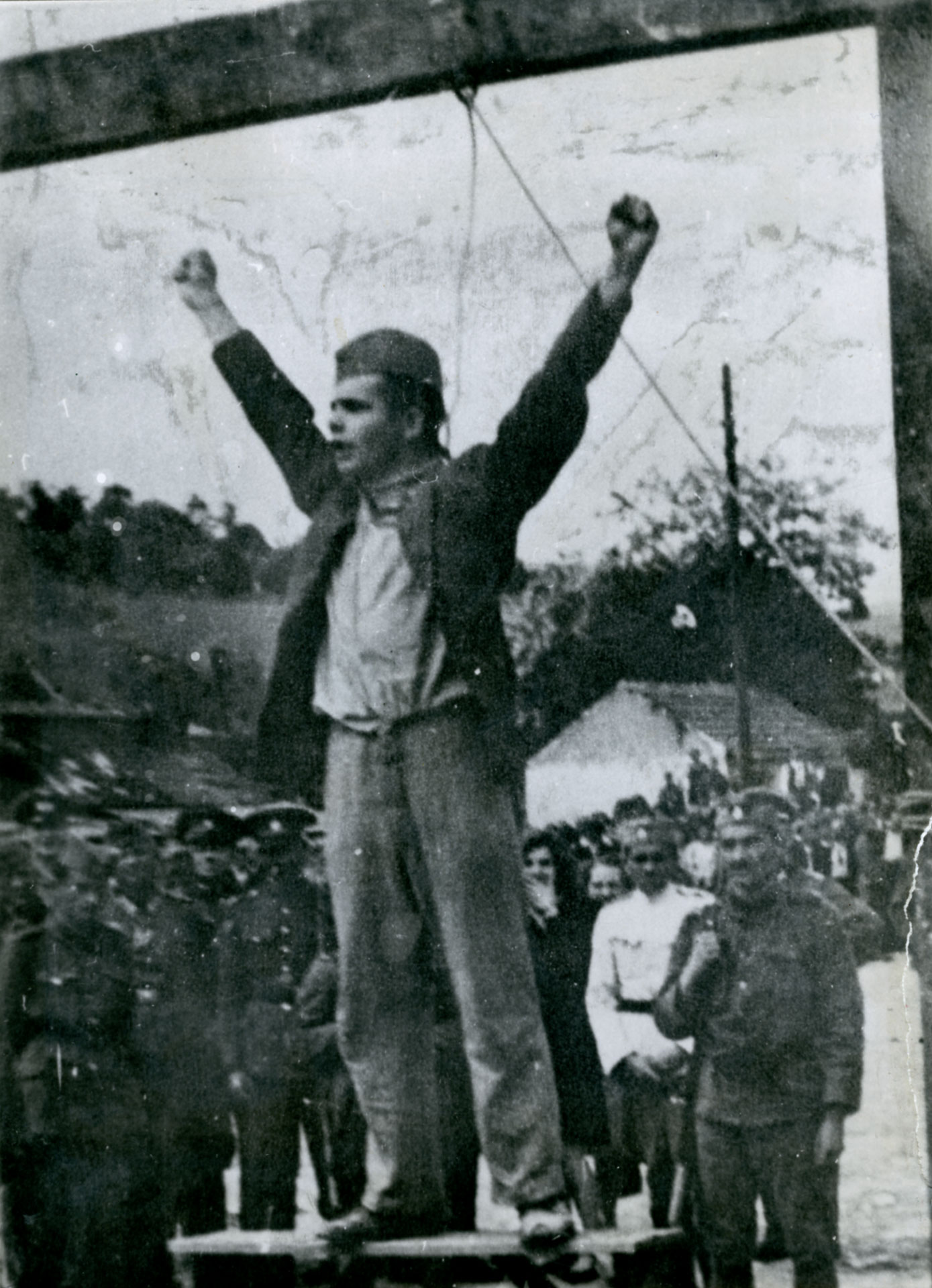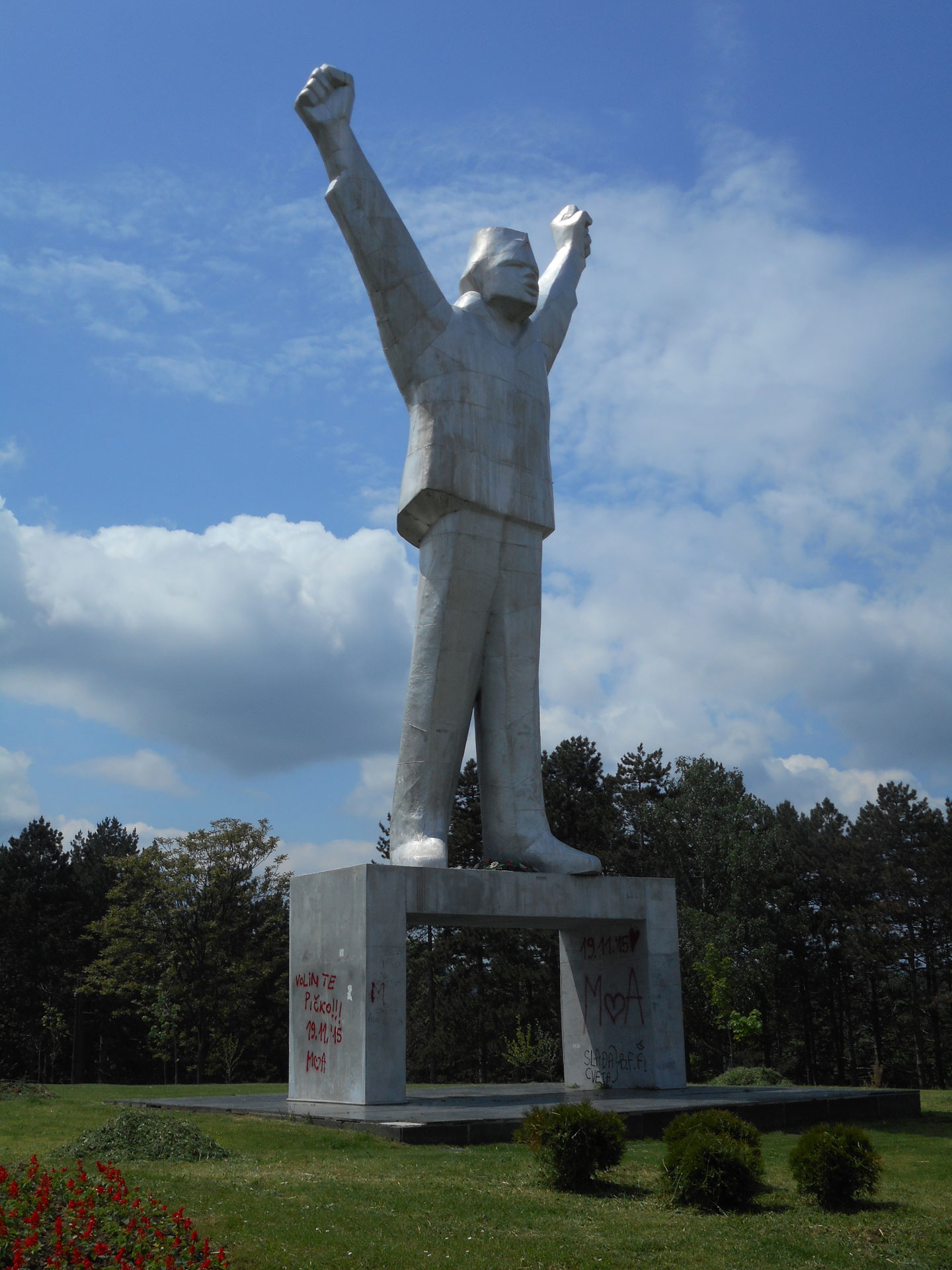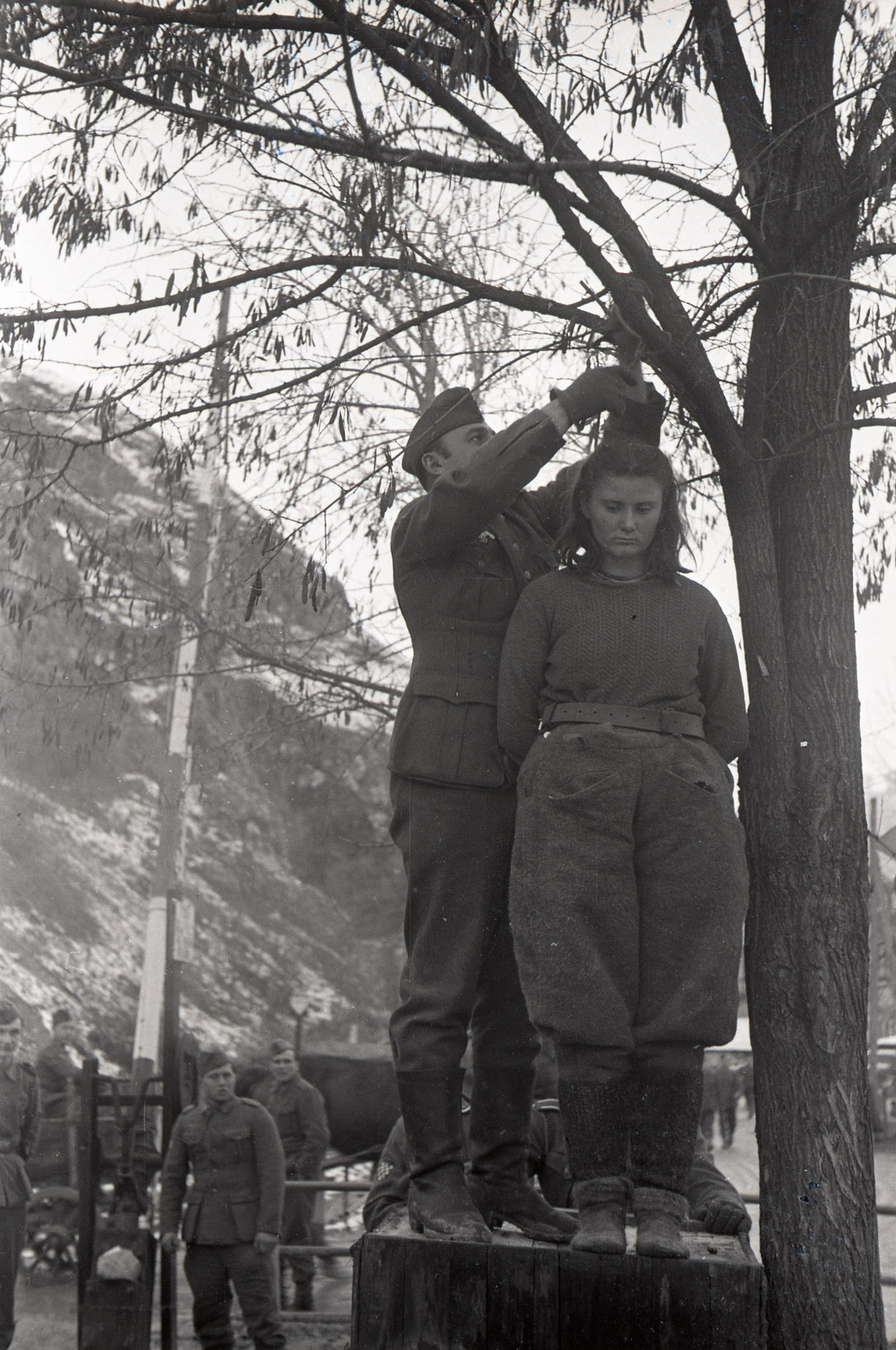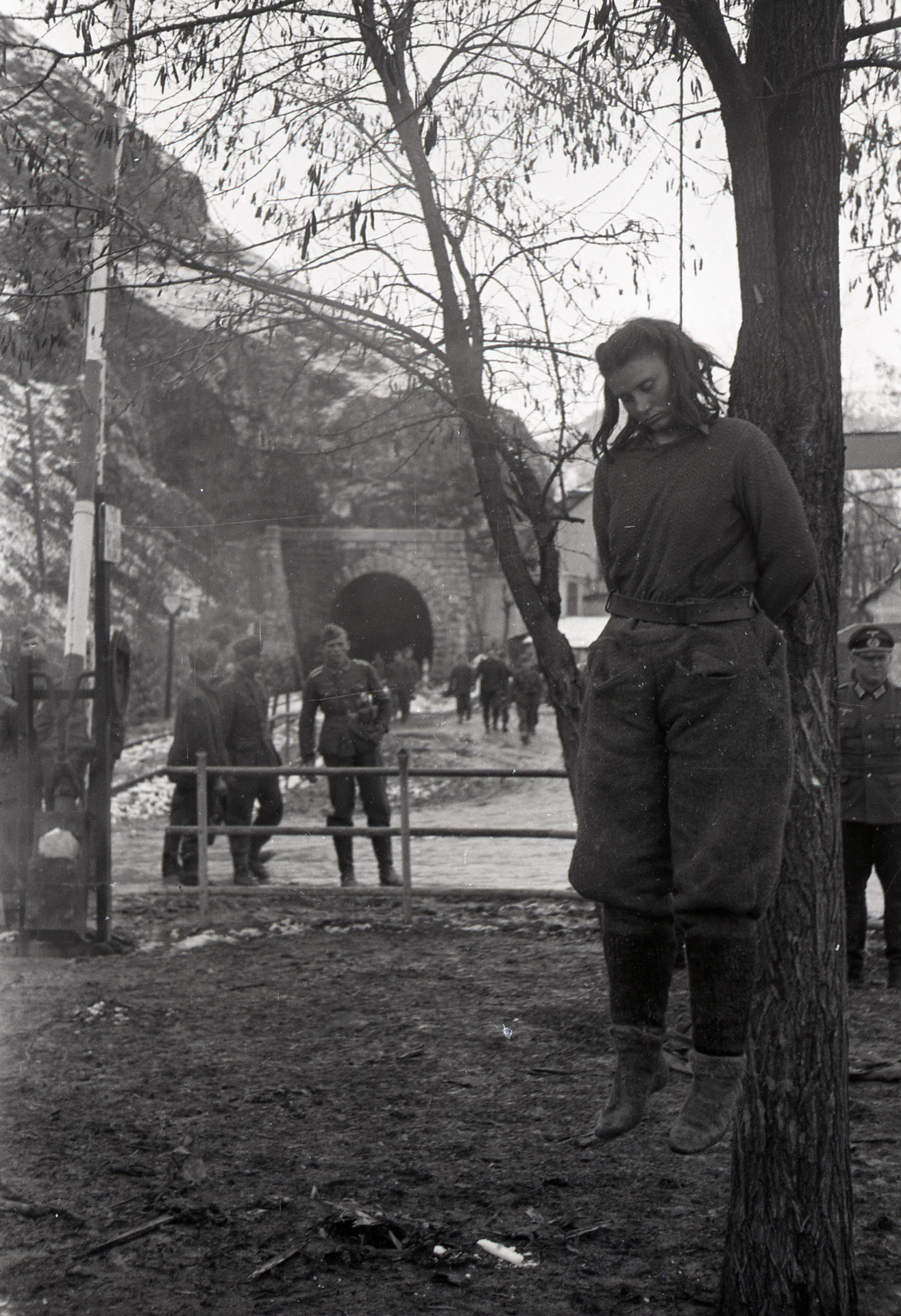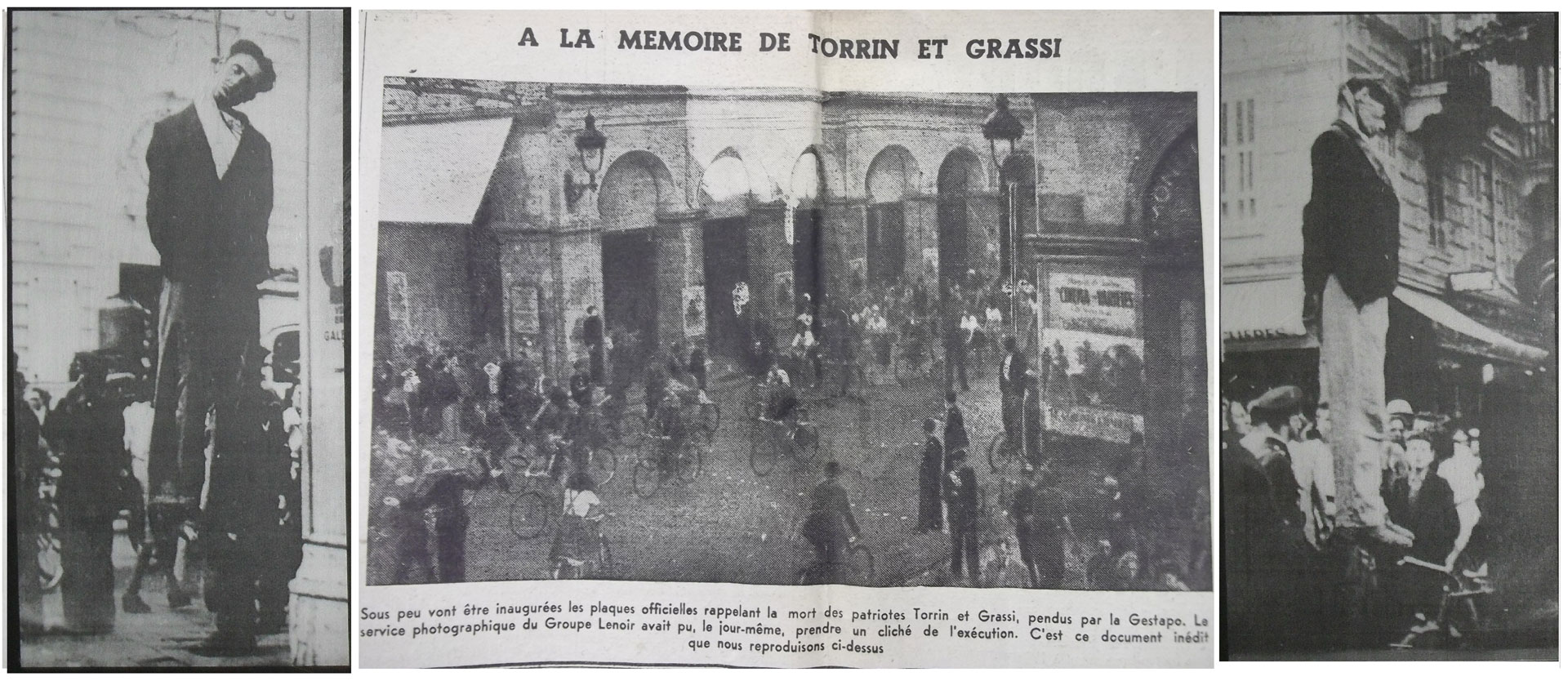Death by Hanging: Martyrs of Resistance
Public hanging of war hostages and civilians was used as a method of terror, punishment and execution during WW2 throughout Europe. It was practiced primarily by the Axis powers in reprisals against resistance groups and individuals, as well as in concentration camps. The aim was humiliation and admonishment—those suspected as being partisans or their supporters, including women, were publicly executed and often left hanging for days.
The sight of hanged people in public, often with signs listing their “crimes” attached to their dangling bodies, was more frequent in eastern and southeastern Europe. In the Balkans, public hangings were regularly part of the counter-insurgency campaigns against the growing antifascist movement. Reprisal shootings and hangings were considered to be efficient ways of deterring insurgents and weakening the support of civilians. However, quite the opposite happened: already during the war, individuals who bravely faced death under the gallows became heroes and martyrs of resistance.
After the war, the new imagery of heroism relied on wartime photos that provided an added value of authenticity. Taken either by perpetrators to provide evidence of executing military orders or by witnesses to record war crimes for future, the images of people fearlessly and defiantly awaiting execution became an important part of Yugoslav collective memory. Such iconic images were utilized in museums, on book covers and as motifs in monuments. The iconic photo of the 26-year-old Stjepan Filipović beneath the gallows, moments before he was hanged by the Chetniks and the police of the Serbian quisling regime, was transposed into two monumental sculptures: one in 1960 in Valjevo, Serbia, where he was hanged, and the other in his birth town Opuzen, Croatia. Though the monument in Opuzen was mined in the 1990s wars, some local residents proudly cherish the memory of their local antifascist hero.
In Western Europe, for example in France, public executions by the occupying forces were less common. However, two cases occurred in Nice and Tulle in the weeks after the Allies landed in Normandy. In Nice, on 7 July 1944, Séraphin Torrin and Ange Grassi, two resistance fighters from the hinterland accused of attacking German soldiers, were hanged by the German police in the centre of Nice and their bodies were left hanging for several hours. This act of intimidation, unusual for France, shocked the population. In the west of France, the town of Tulle was the victim of severe repression by the German authorities. On 9 June 1944, the Reich SS division under General Lammerding arrested 3,000 men in the town in retaliation for an attack by the FTP resistance group. Ninety-nine of them were hanged from the balconies of the town, causing horror and panic among the inhabitants. After the war, monuments were erected to commemorate the victims of the two public hangings.
Sanja Horvatinčić, Nataša Mataušić, Yvan Gastaut


